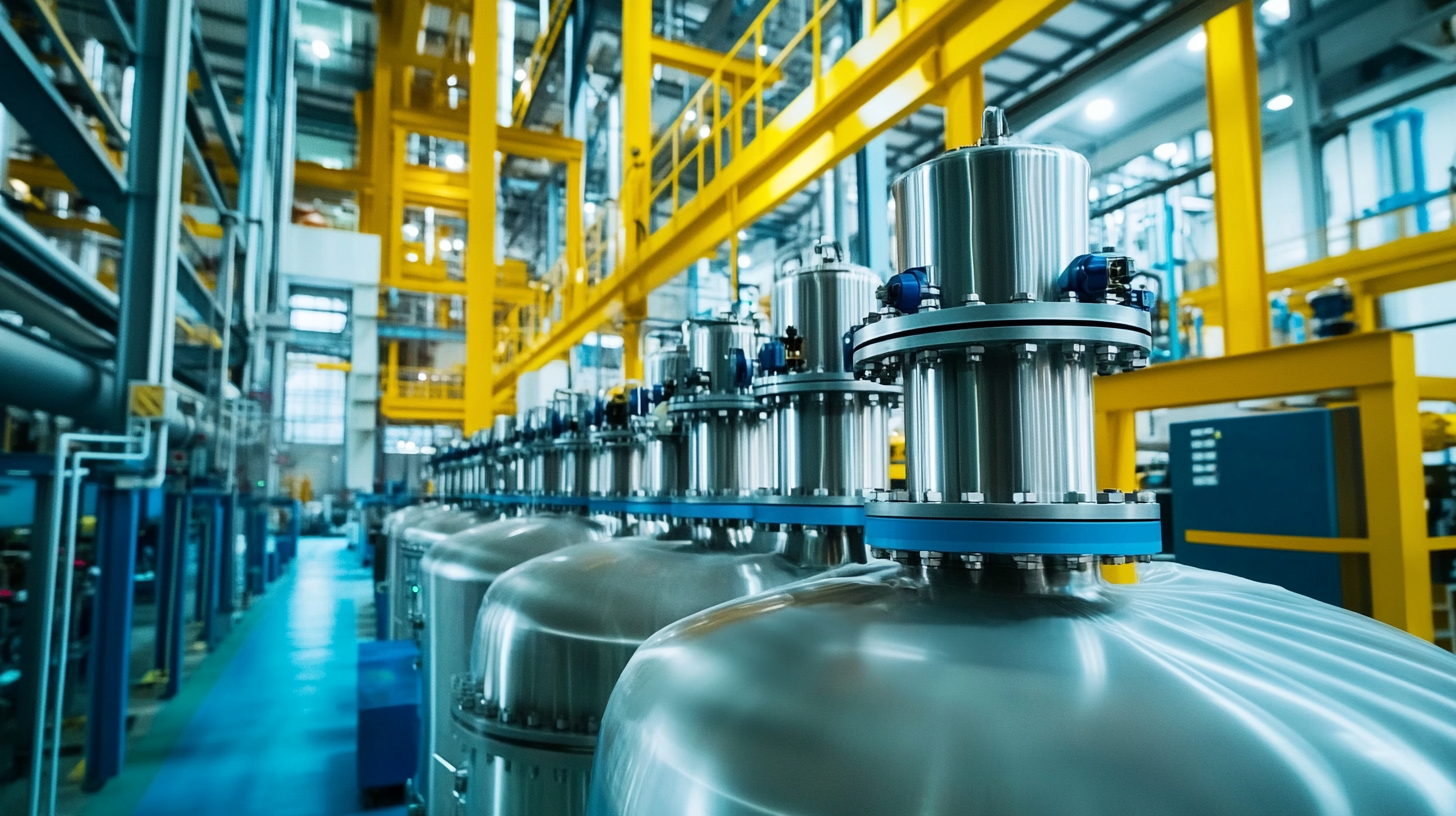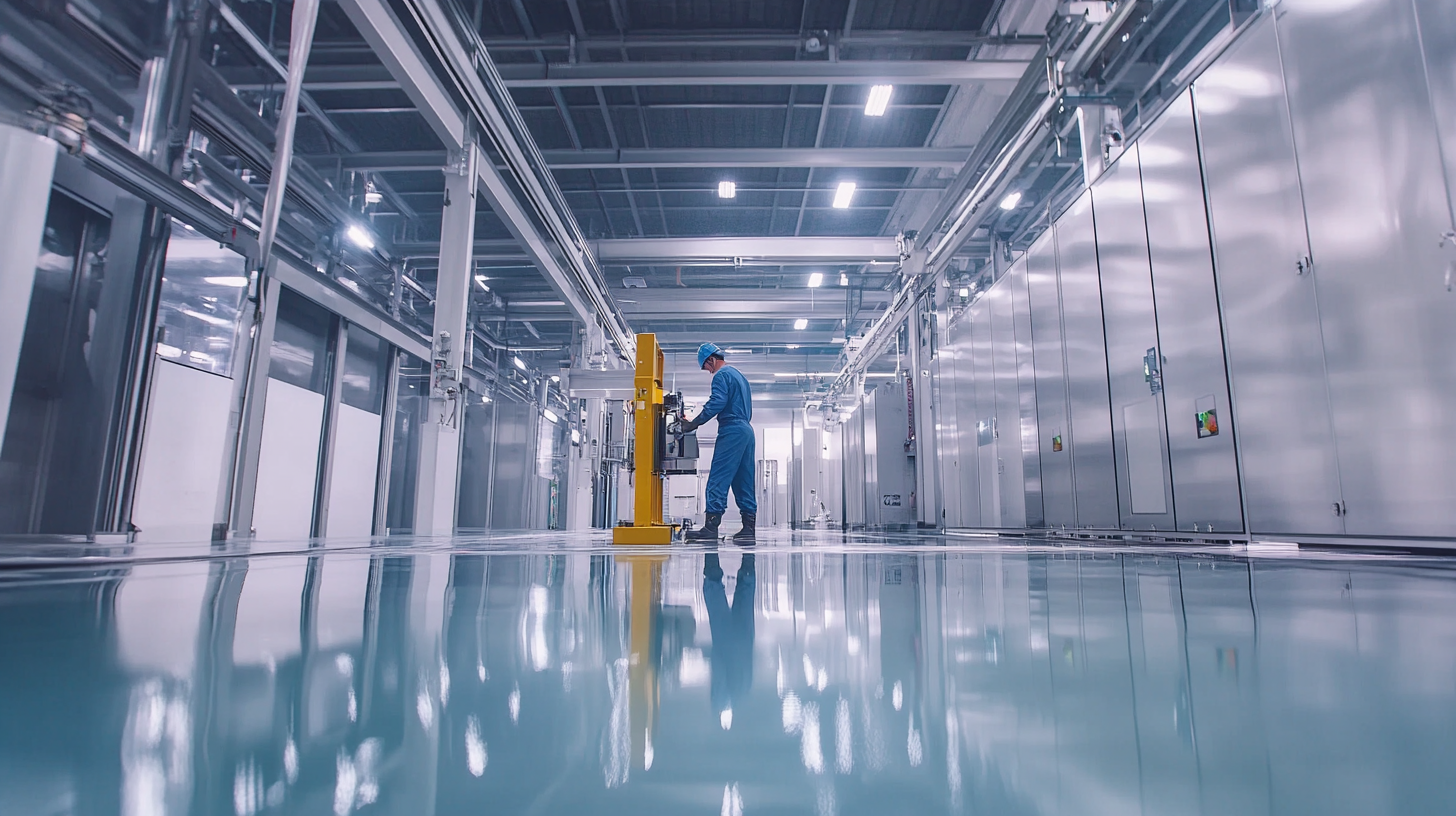
In recent years, the manufacturing landscape has been significantly influenced by geopolitical tensions, particularly the tariff disputes between the United States and China. Amidst these challenges, the Chinese manufacturing sector has demonstrated remarkable resilience, especially in the domain of coating equipment. This essential industry, vital for various applications including automotive, electronics, and construction, has not only adapted to the new trade environment but has also experienced growth against the backdrop of tariffs. As companies seek high-quality coating solutions while navigating the complexities of international trade, the strong performance of Chinese manufacturers showcases not just survival, but a strategic pivot towards innovation and quality enhancement. This blog delves into the factors contributing to this robust growth in the coating equipment sector and highlights the future outlook amidst ongoing US-China tensions.

Chinese manufacturing is demonstrating remarkable resilience in the face of U.S. tariff challenges, particularly in sectors like coating equipment. Manufacturers are adapting by implementing innovative strategies to mitigate the impact of increasing tariffs. Collaborating closely with e-commerce platforms and receiving support from government initiatives, small-business owners are navigating these turbulent waters with agility. This adaptability not only highlights their commitment to sustaining operations but also positions them to seize new opportunities in a highly competitive global landscape.
As companies strive to diversify their supply chains, many are looking beyond traditional dependencies on China. This shift towards localization reflects a growing recognition of the need to restructure global supply chains to withstand trade policy fluctuations. Manufacturers are diligently exploring new markets and innovative approaches to production, enabling them to enhance their resilience in an ever-changing trade environment. This proactive stance is vital for maintaining competitiveness and ensures a steady transition toward a more resilient future amidst the ongoing tariff uncertainties.
In the face of ongoing trade tensions, Chinese manufacturing in coating equipment has demonstrated remarkable resilience. Companies have adopted innovative strategies to navigate the complexities of the US-China tariff landscape. One significant approach has been to diversify supply chains, reducing dependency on US components while seeking alternative materials and technologies from domestic and other international sources. This shift not only mitigates risks associated with tariffs but also reinforces local manufacturing capabilities.
Moreover, the integration of advanced technologies like automation and smart manufacturing plays a crucial role in enhancing production efficiency. By leveraging artificial intelligence and data analytics, manufacturers are optimizing resource allocation and reducing waste in the coating process. These innovations not only improve product quality but also lower operational costs, allowing Chinese manufacturers to remain competitive in the global market. As a result, the industry is not only surviving but thriving, finding new pathways for growth while adapting to the challenges posed by international trade.

Chinese manufacturing, particularly in the coating equipment sector, is demonstrating resilient growth despite the ongoing challenges posed by US-China tariffs. A crucial factor driving this growth is the surging domestic demand, which has been sustained even amid global uncertainties and economic fluctuations. Recent data indicates that while exports, especially in the automotive sector, are showing signs of slowing down, the strength of the domestic market is proving to be a stabilizing force for manufacturers.
**Tips for Manufacturers: Focus on Domestic Opportunities**
Manufacturers should prioritize tapping into local market needs and preferences to buffer against international market volatility. Developing tailored solutions for domestic consumers can enhance customer loyalty and capture market share. Furthermore, fostering innovation to address specific local demands can lead to a competitive edge that facilitates growth.
Moreover, as China's GDP shows signs of solid expansion, manufacturers should strategically align their production capabilities with consumer behavior trends. Understanding the drivers of domestic consumption can help manufacturers refine their product offerings. Embracing agile manufacturing processes and maintaining flexibility to rapidly adapt to changing consumer preferences will be vital in sustaining growth.
The ongoing shifts in global trade dynamics, particularly due to US-China tariff challenges, have compelled Chinese manufacturers of coating equipment to seek new export opportunities beyond traditional markets. As tariffs increase operational costs and complicate trade routes, manufacturers are innovating and diversifying their target markets to sustain growth. Emerging economies present a fertile ground for exploring these new avenues. Countries in Southeast Asia, Africa, and Latin America are witnessing industrialization and modernization, creating a rising demand for advanced coating technologies.
To capitalize on these opportunities, Chinese manufacturers are strategically adapting their marketing and operational approaches. Building partnerships with local distributors, investing in market research, and customizing products to meet specific regional needs are vital steps. This proactive stance not only mitigates tariff impacts but also positions these manufacturers as valuable contributors to the global supply chain. By focusing on innovation and sustainability, the Chinese coating equipment industry is not only resilient but also poised to thrive in new markets, ensuring that it remains competitive in the face of evolving international challenges.

The rapid advancement of technology plays a pivotal role in bolstering the resilience of Chinese manufacturing, particularly in specialized sectors such as coating equipment. Amidst the challenges posed by US-China tariffs, the industry has turned to innovation to enhance efficiency and competitiveness. Reports indicate that China's investment in R&D has soared, reaching approximately 2.4% of GDP, positioning the nation as a formidable player in both domestic and global markets. This strategic focus on technology not only helps manufacturers reduce costs and improve product quality but also facilitates compliance with international standards, thus expanding exports despite geopolitical tensions.
In parallel, breakthroughs in artificial intelligence, exemplified by the latest models from DeepSeek, showcase a transformative shift in China's technological landscape. Recent analyses reveal that China now leads the world in AI research publications, reflecting a commitment to innovation that permeates various sectors. This shift has disrupted traditional paradigms, enabling smaller companies and startups to flourish alongside industry giants. As the competitive landscape evolves, these technological advancements enable Chinese manufacturers to enhance their operational capabilities, signaling a robust potential for growth and a renewed competitive edge even in the face of external pressures.
This chart illustrates the growth in production of coating equipment in China over the past five years, showing resilience against US-China tariff challenges. Technological advancements have led to improved efficiency and competitiveness in the sector.